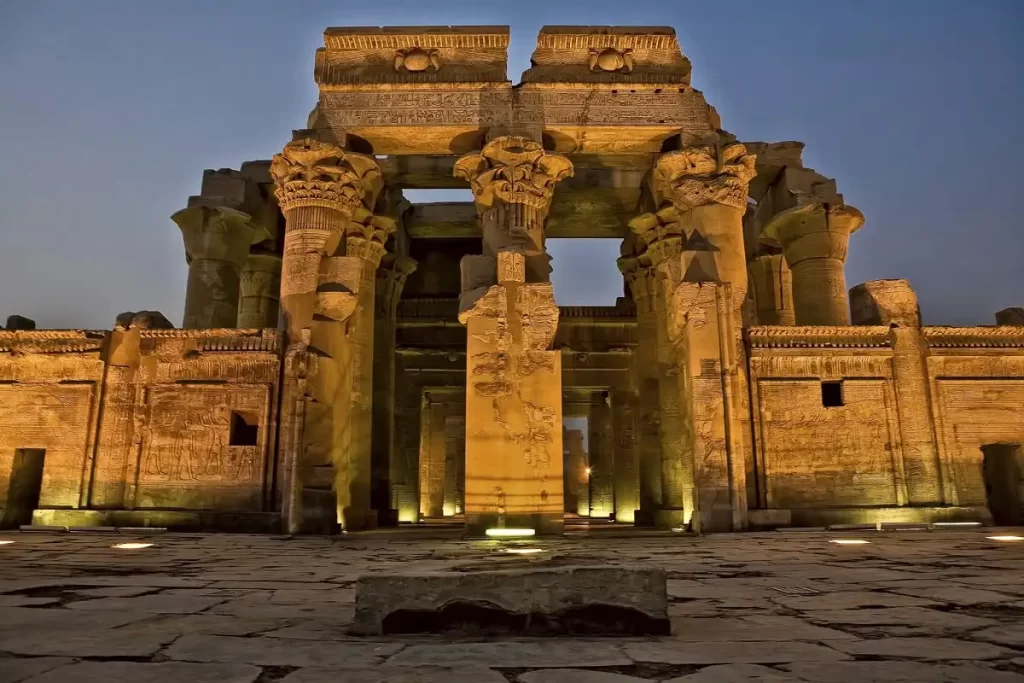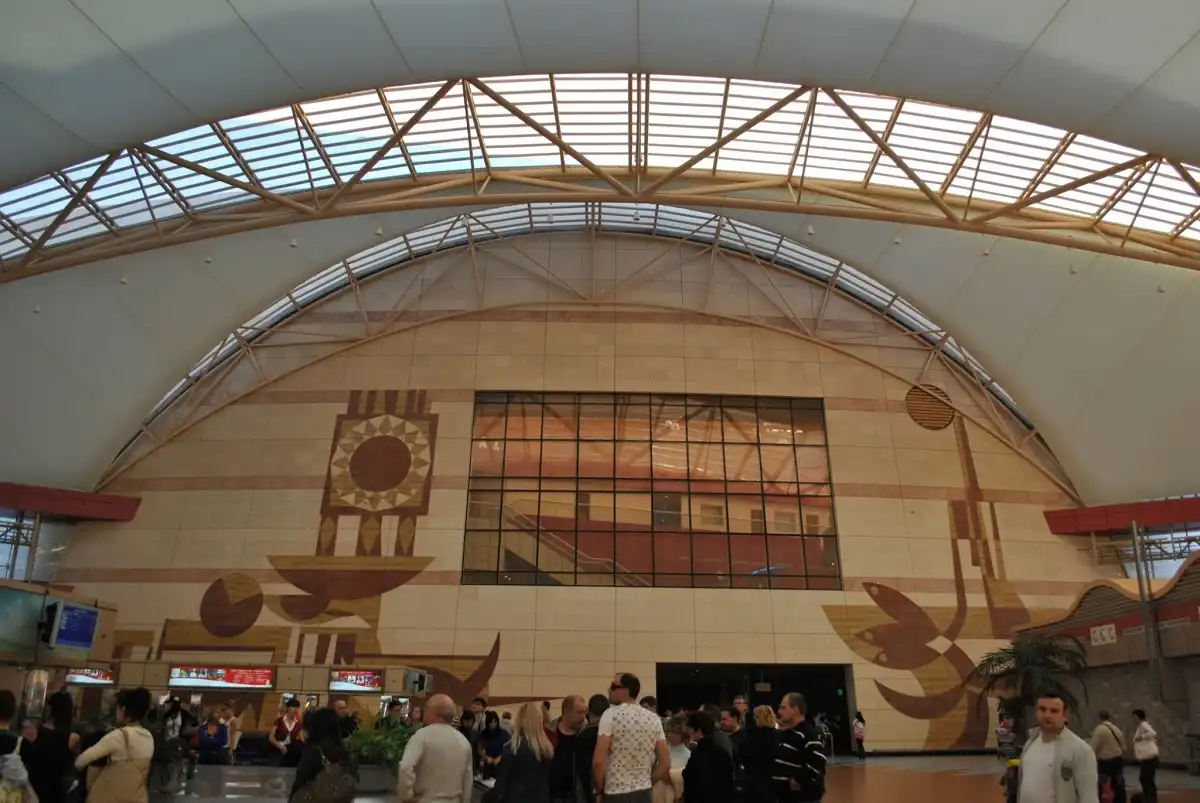
Kom Ombo Temple
[ez-toc]
The Kom Ombo Temple’s history
One of the most distinctive temples in Aswan, if not all of Egypt, is Kom Ombo Temple. As “Kom” in Arabic means “Hill” and “Ombo” in hieroglyphics signifies gold, Kom Ombo is translated as “The Hill of Gold.” It was built between 205 and 180 BC, during the reign of King Ptolemy V, and some improvements were made later, during the Roman era. It is 45 kilometers north of Aswan on the east bank of the Nile.
The Kom Ombo Temple is regarded as being extremely unique and special because it has a double design and is divided into two identical sectors that are each dedicated to the worship of a different god. The southern half of the temple is the worship house of the crocodile god Sobek, who is the patron of fertility and is joined by Hathor and Khonsu, and the northern half of the temple was dedicated to the falcon god Horus the Elder (Haroeris), who is the protector of the Additionally, it was constructed to reaffirm the Ptolemies dominance and sovereignty over the entire nation.
Kom Ombo Temple components
The design of the Kom Ombo temple is extremely uncommon and unique because it places two identical sectors next to one another but separate from one another for worship. Like most of the temples in Ancient Egypt, this one was constructed using limestone in the shape of a rectangle.
The temple’s design is nearly symmetrical, with two twin sanctuaries and two parallel passages connecting to the building’s façade. A front courtyard, a hypostyle hall, three interior halls, several antechambers where offerings were made, little rooms used for various rituals, and the two main sanctuaries for Horus and Sobek make up this structure. Ptolemy VIII and XII can be seen bowing down before the Nile gods in one of the numerous exquisite statues and decorations that adorn the temple’s walls and columns. As a reminder of their renown, the Ptolemaic dynasty attempted to upgrade the temple over time.



